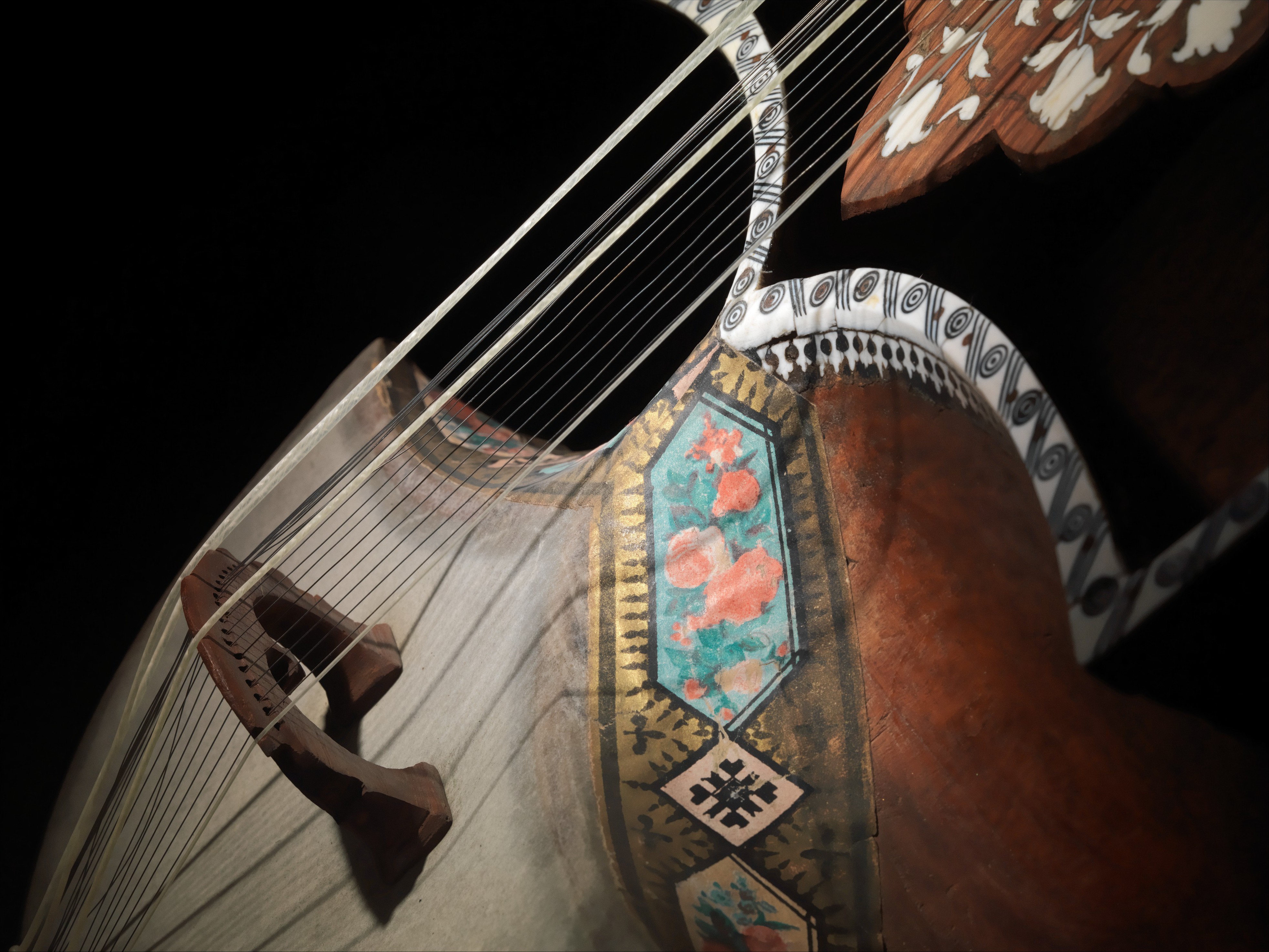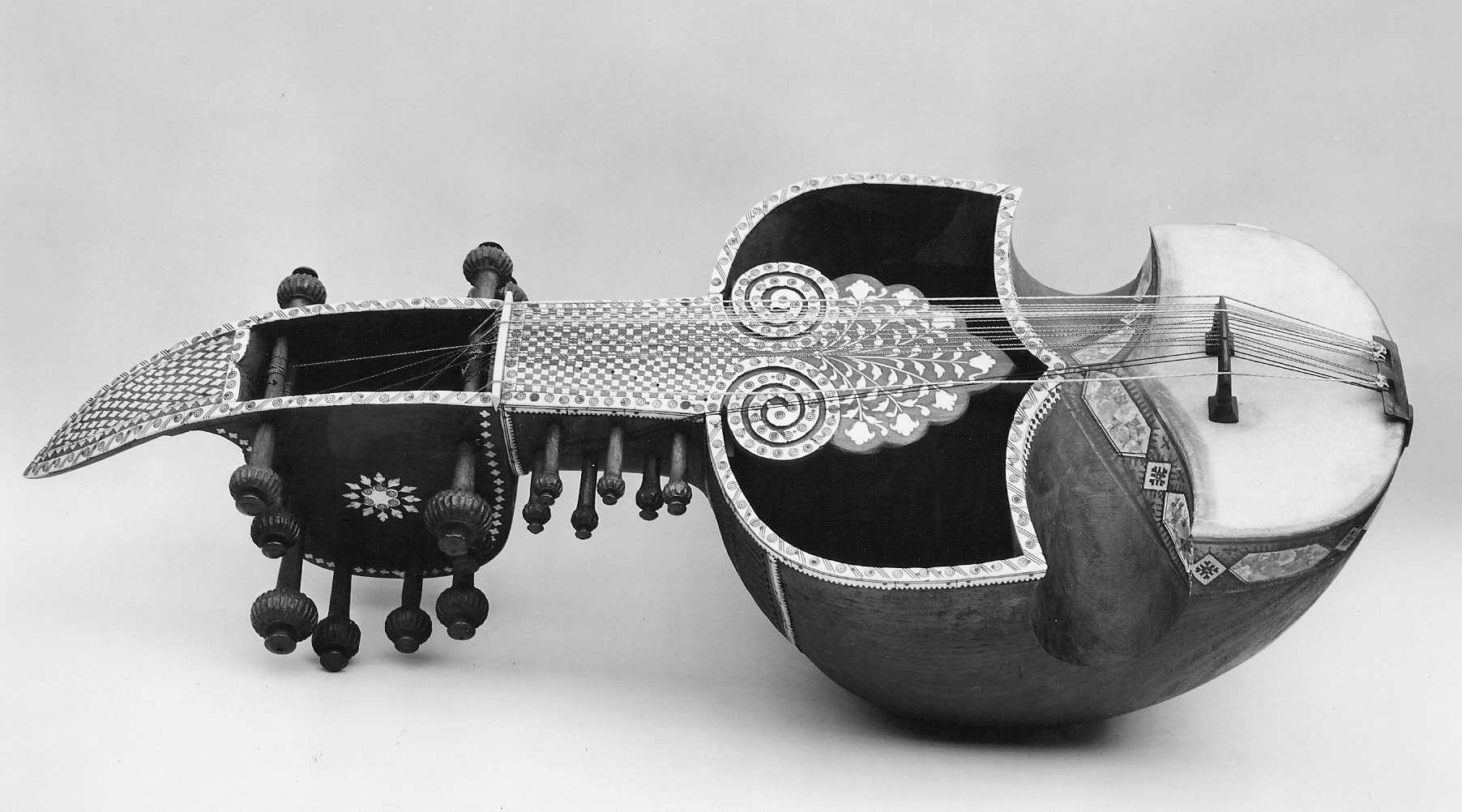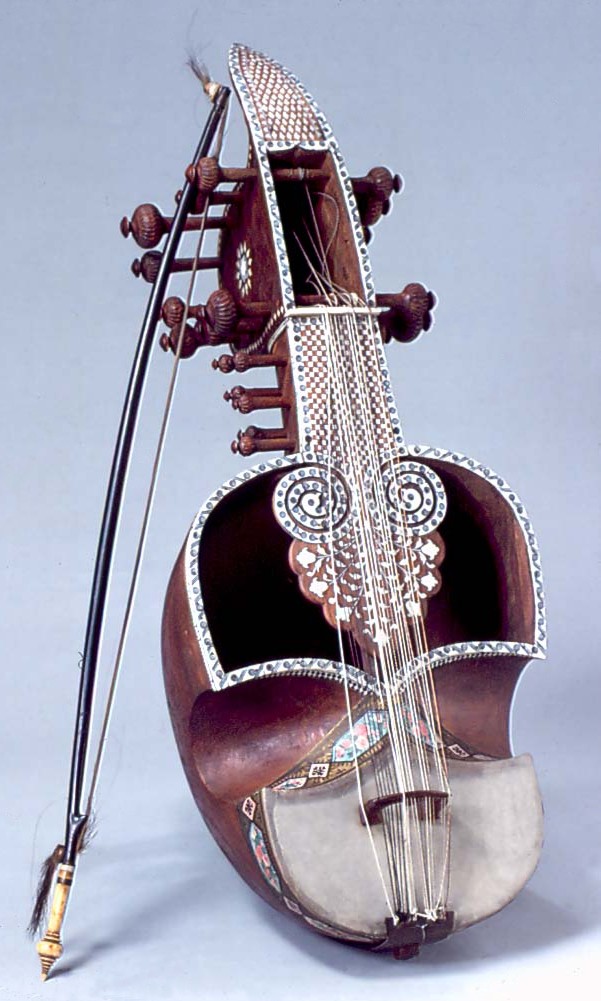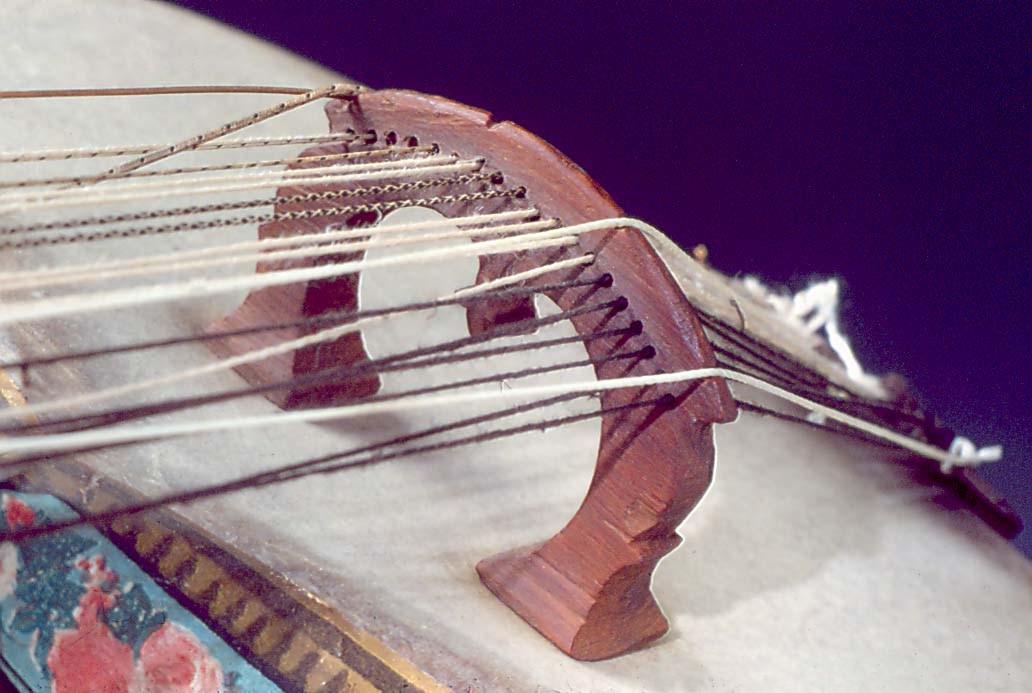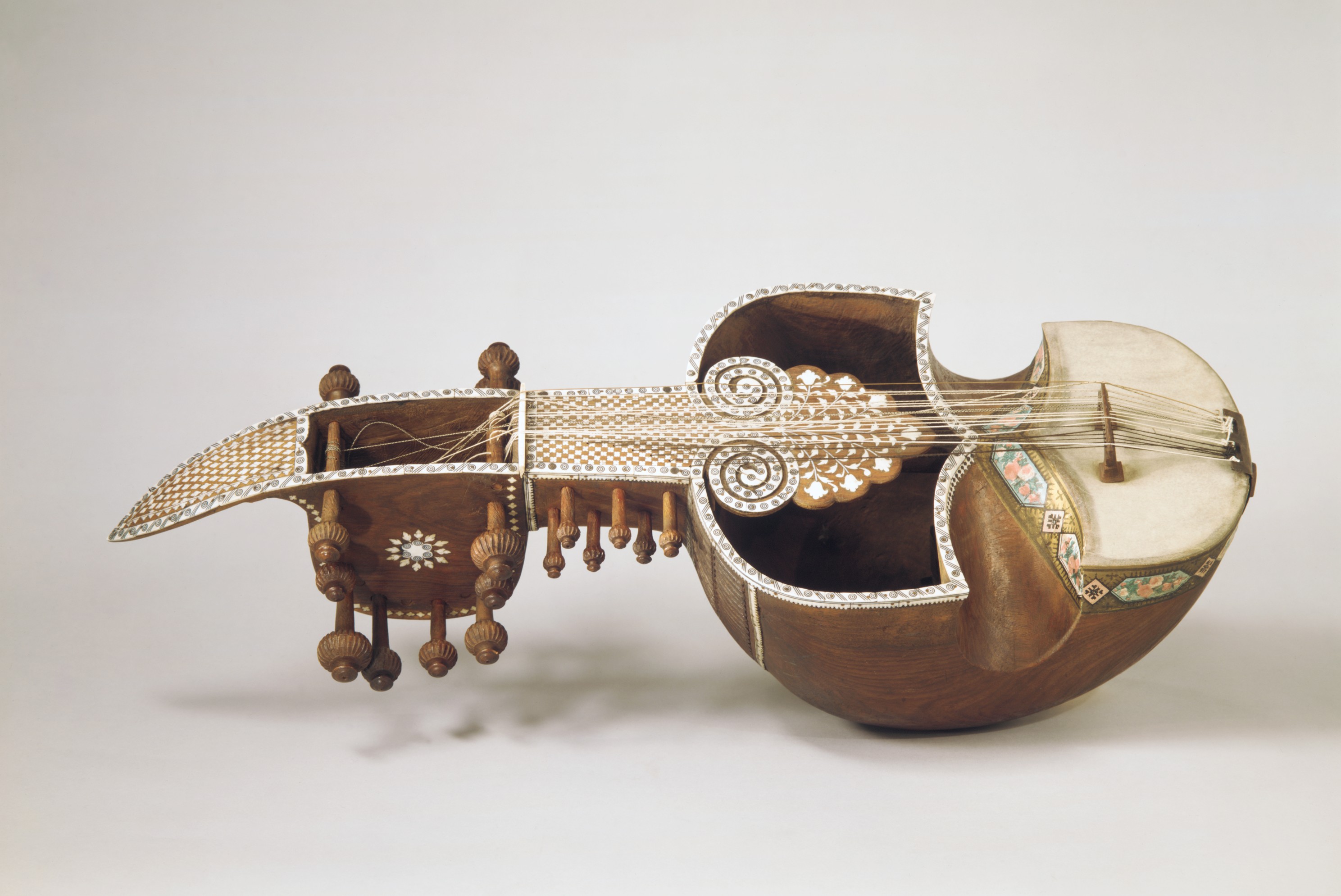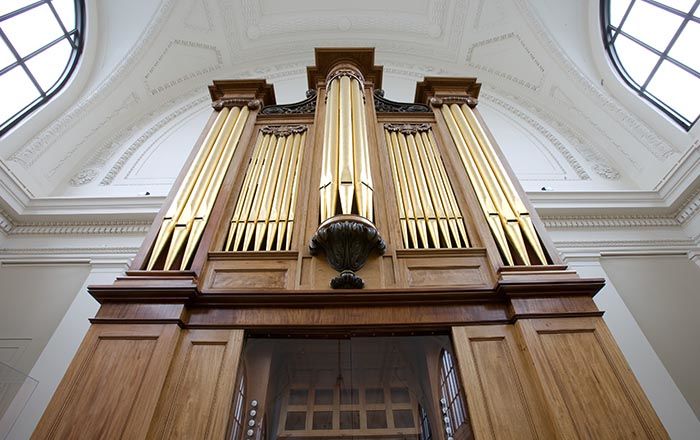Sārindā
The sārindā's bi-partite body is carved from a single block tun (Cedrela toona) wood and the lower section is covered with parchment. This elaborate version is decorated with ivory and bone. It's four melody strings sound when bowed activating the twenty-four sympathetic strings which are guided through the lower part of the bridge to holes in the fingerboard. Double-chested fiddles are found in South Asia and southern Afghanistan and is derived from qobuz of Central Asia. It is used to accompany dance, flute and vocal music.
This image cannot be enlarged, viewed at full screen, or downloaded.
This artwork is meant to be viewed from right to left. Scroll left to view more.


